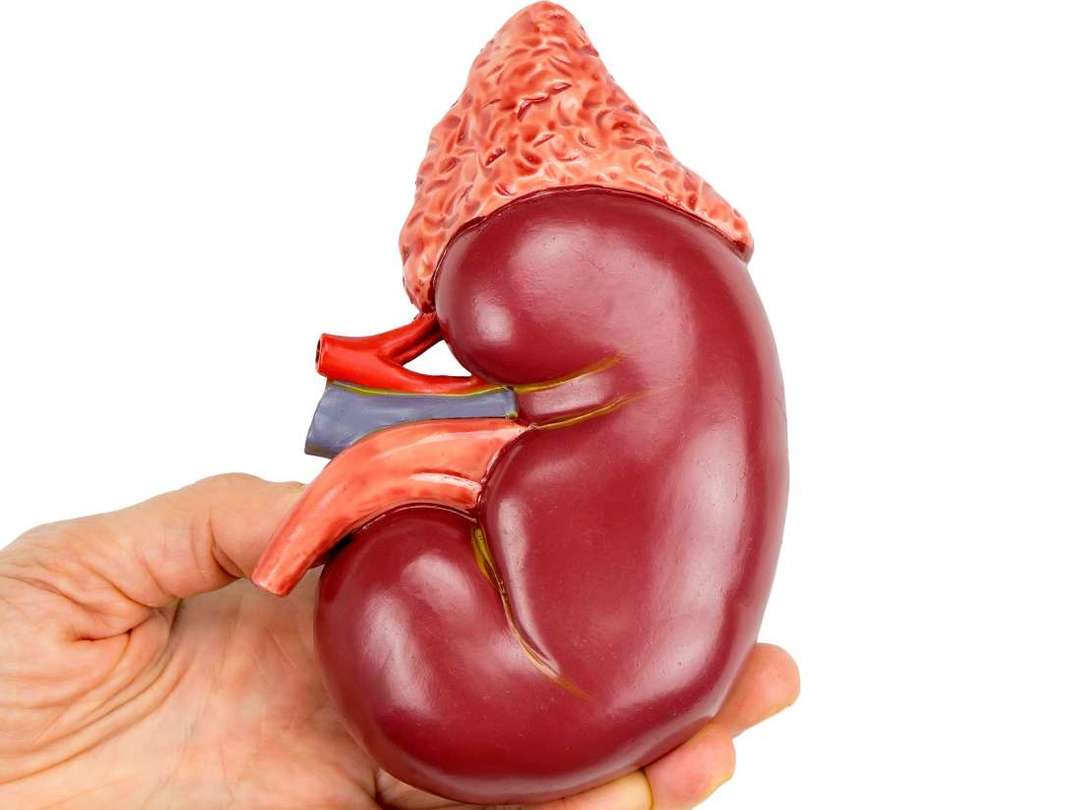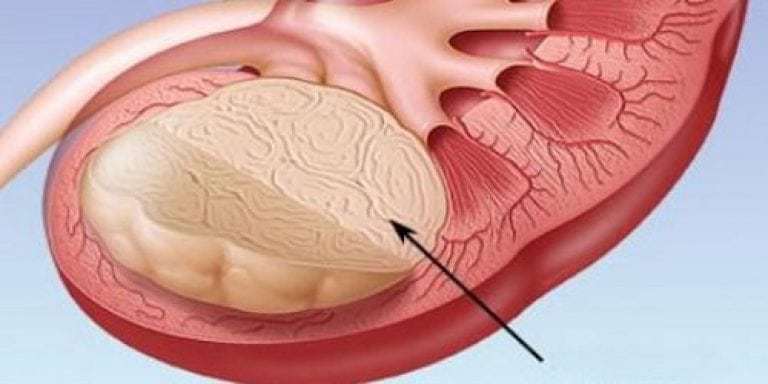Bartter's syndrome: what is it, causes, symptoms, treatment, prognosis
Content
- What is Bartter Syndrome?
- Symptoms and Signs
- Causes of Bartter Syndrome
- Diagnostics
- Treatment for Bartter's syndrome
- Medications
- Other interventions
- Forecast for life
What is Bartter Syndrome?
Bartter's Syndrome (normotensive hyperaldosteronism) is a rare hereditary disorder that interferes with the ability to the kidneys absorb salts, potassium, calcium and other electrolytes, resulting in excessive loss of all these compounds in urine. It is characterized by dehydration, fatigue, cramps, weakness, brittle bones, and hardened kidneys (glomerulosclerosis).
There are five main types of Bartter syndrome, four of which can begin before birth (antenatally) and the classic form that begins in early childhood and tends to be less serious.
The disease can be diagnosed with blood and urine tests and confirmed by genetic testing. Treatment focuses on treating symptoms on a case-by-case basis. There is no cure for Bartter's syndrome.
The disease is named after Dr. Frederick Bartter, who first described the syndrome in 1962.
Symptoms and Signs

Symptoms of Bartter syndrome are associated with excessive loss of salt (sodium chloride), potassium and calcium in the urine, all of which have potentially serious consequences. Together they characterize a disorder in which children are often unable to grow and gain weight at the expected rate (a so-called developmental failure, see Sect. Photo).
Among the characteristic symptoms and signs of Bartter's syndrome are observed:
- Excessive salt loss which can lead to dehydration, constipation, thirst for salt, increased urination (polyuria), increased thirst (polydipsia) and awakening at night to urinate (nocturia).
- Excessive loss of potassium which can lead to hypokalemia (low potassium in the blood), characterized by muscle weakness, cramps, fatigue, and rapid heartbeat (tachycardia), breathing problems, digestive problems and hearing loss.
- Excessive loss of calcium in the urine (hypocalciuria), which can interfere with bone development in children and cause weakened bones (osteopenia).
Symptoms can vary significantly, with some children having only mild symptoms. Those with the antenatal form tend to have worse symptoms, mainly because the loss of salt, potassium, or calcium can interfere with the normal development of the fetus.
In severe cases, the signs and symptoms of Bartter syndrome will be visible before birth. Impaired kidney function can lead to accumulation of amniotic fluid around the developing fetus (polyhydramnios), causing premature birth. Excessive urination in newborns can often be life-threatening. Vomiting and diarrhea may also occur.
Read also:Pyelitis: symptoms and treatment in women and men
Despite the severity of these episodes, kidney function in children can sometimes return to normal within a few weeks and does not require further treatment.
Causes of Bartter Syndrome

Bartter's syndrome is an autosomal recessive pattern, meaning that for the disease to develop, a child must have two copies of the abnormal gene - one from the father and one from the mother.
Bartter syndrome is caused by mutations in one of seven different genes, each of which belongs to a specific type of Bartter syndrome. Additional mutations can lead to subtypes with a different set of symptoms or disease severity.
Genes are designed to code for proteins that transport salt and electrolytes, such as potassium and calcium, to the kidneys for reabsorption in the loop of Henle (a U-shaped channel where water and salt are released from urine). If the genes are mutated, the resulting proteins cannot transport some or all of these compounds through Henle's loop cells.
Specific genetic mutations refer to five main types of Bartter syndrome:
| Names | A type | Gene mutations | Details |
| Antenatal Bartter Syndrome | 1 | SLC12A1, NKCC2 | Tends to be serious with the risk of polyhydramnios and premature birth. |
| Antenatal Bartter Syndrome | 2 | ROMK, KCNJ1 | Tends to be serious with the risk of polyhydramnios and premature birth. |
| Classic Bartter syndrome | 3 | CLCNKB | Tends to be milder than other forms of the disease. |
| Bartters syndrome with sensorineural deafness | 4 | BNDS | Tends to be more severe than other forms of hearing loss resulting from antenatal damage to the auditory nerve. |
| Bartter's syndrome with autosomal dominant hypocalcemia | 5 | CASR | Typically a severe form of the disease, affecting mainly boys and causing stunting and osteopenia. |
Bartter's syndrome is rare, affecting only one in 1.2 million newborns. This most often occurs in children born to related parents (close relatives). The disease appears to be more prevalent in Costa Rica and Kuwait than in any other population.
There is little research on life expectancy in children with Bartter syndrome, but most of the evidence suggests that the outlook is good if the disease is diagnosed and treated for early stage.
Despite the impact that Bartter syndrome can have on the kidneys, renal failure is rare.
Read also:Polyuria
Diagnostics
Bartter's syndrome is diagnosed based on an examination of symptoms and medical history, and various blood and urine tests to check for imbalances in the levels of salt, potassium, calcium, and others electrolytes. Because the disorder is so rare, the input of a geneticist, genetic counselor, and other specialists will almost always be needed.
Blood tests, used to diagnose Bartter's syndrome, detect low levels of potassium, chloride, magnesium and bicarbonate in the blood, as well as elevated levels of the hormones renin and aldosterone.
Analysis of urine will be used to detect abnormally high levels of sodium, chloride, potassium, calcium and magnesium in the urine, as well as the presence of prostaglandin E2 (a marker of kidney inflammation).
Antenatal forms of Bartter's syndrome can often be diagnosed before birth, when polyhydramnios is found without birth defects. There will also be elevated levels of chloride and aldosterone in the amniotic fluid.
Molecular genetic research can confirm the diagnosis. There are several genetic tests that can detect various mutations associated with Bartter's syndrome, available only through specialized genetic laboratories.
Additional genetic testing may be required to differentiate Bartter syndrome from a closely related but milder inherited disorder known as Gitelman syndrome.
Treatment for Bartter's syndrome
The mainstay of treatment for Bartter syndrome is to restore the balance of fluids and electrolytes in the body. The approach can vary from person to person depending on the severity of the symptoms. Some children may require minimal therapeutic intervention or spontaneous normalization without the need for further treatment. Others may need lifelong assistance from a team of professionals, including a pediatrician, general practitioner, or nephrologist.
Medications

Supplements of sodium, potassium chloride, and magnesium are often used to correct electrolyte imbalances. Other drugs may be prescribed to treat inflammation and lower prostaglandin levels that contribute to excessive urination, including non-steroidal anti-inflammatory drugs (NSAIDs) such as Advil (ibuprofen), Celebrex (celecoxib), or Indocollir (indomethacin).
Read also:Diseases of the kidneys and urinary system in humans: a list and their symptoms
Gastric acid blockers such as Kvamatel (famotidine), Tagamet (cimetidine), or Zantac (ranitidine), may be necessary to reduce the risk of ulcers and bleeding caused by prolonged use NSAIDs.
Other medicines such as aldosterone antagonists, angiotensin II receptor blockers, and angiotensin-converting enzyme (ACE) inhibitors. may be needed to reduce renin levels and the risk of kidney damage.
Depending on which electrolytes are imbalanced, some people may need diuretics. not containing potassium, such as spironolactone or amiloride, to increase urinary sodium excretion, but retain potassium.
Other interventions
Infants with severe, life-threatening symptoms may require intravenous (IV) salt and water replacement. Children who suffer from a developmental disability often benefit from growth hormone therapy to prevent stunting and short stature. Cochlear implants can also be used to treat deafness associated with type 4 Bartter syndrome.
In addition to supplementation, the patient's diet will adapt to increase potassium and salt intake. In addition to keeping children hydrated, eating salty foods is encouraged.
With age, Bartter's syndrome becomes easier to control and treat.
Forecast for life
Bartter's syndrome is an autosomal recessive disorder and does not respond to treatment. The degree of disability depends on the severity of the receptor dysfunction, but the prognosis is good in many cases, as patients can lead a fairly normal life.



